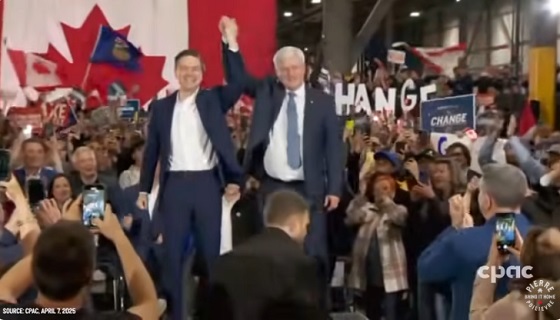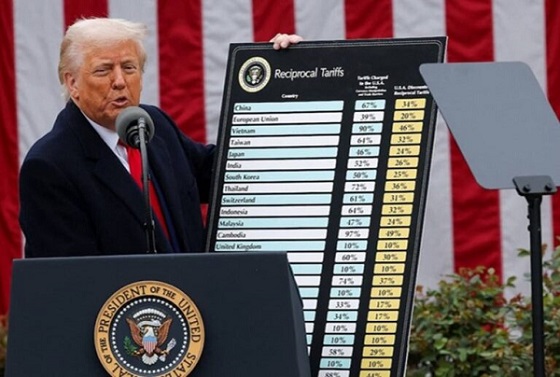Alberta
Calgary geothermal tech leader Eavor awarded $130 million CND grant from EU to help European energy security

News Release from Eavor Technologies Inc.
Eavor’s next-generation geothermal project awarded €91,6 million grant from the European Innovation Fund
Eavor Technologies Inc. and Eavor Erdwärme Geretsried GmbH (together “Eavor”), the leader in globally scalable geothermal closed-loop technology, has been awarded a €91,6 million grant from the European Innovation Fund (“EIF”), in support of the Eavor-Europe™ geothermal project already under construction in Bavaria south of Munich near the town of Geretsried, Germany.
The project is the world’s first commercial implementation of an Eavor-Loop™, a showpiece of the zero-emissions heat and power production capabilities of next-generation geothermal technology, and a flagship site for the fundamental ability of Eavor-Loop™ to provide energy security and autonomy, globally.
Construction began in October 2022, with drilling scheduled to commence in July 2023. Two of Europe’s largest drilling rigs are already under a four-year contract with KCA-Deutag. An Organic Rankine Cycle (“ORC”) power plant is being designed and constructed simultaneously with drilling operations in collaboration with Turboden S.p.A., with the first energy production scheduled for Q4, 2024.
John Redfern, President, CEO and Co-Founder at Eavor Technologies Inc., stated: “I’d like to thank the European Commission. We at Eavor are humbled to be included in the EIF program alongside so many prestigious European multinationals. We believe this first commercial Eavor-Loop™ will open the floodgates to the broad implementation of what is the first truly scalable form of green baseload energy. In this way, we hope to help Europe solve its twin existential threats of Climate Change and lack of Energy Autonomy”.
The project will result in 8,2 MWe and ~44.000 tCO2e GHG emissions avoided per year including anticipated heat offtake and power sales. Eavor estimates that ~20.000 homes will be powered with clean energy harnessed from the Earth and up to 600 person-years of drilling services and powerplant/infrastructure jobs will be created during the construction phase of the project.
Philippe Dumas, Secretary General at the European Geothermal Energy Council, stated: “I’m glad to see the EC Innovation Fund supporting the geothermal project submitted by Eavor GmbH to commercially demonstrate innovative renewable district heating and power supply in Geretsried, Germany. Given the energy, climate and food security crisis as well as the need to meet the tripling of the geothermal target by 2030, this innovative project is of paramount importance: it will increase the security of electricity supply, help decarbonise the district heating sector, reduce greenhouse gas emissions and stimulate technological innovation all of which could also be replicated elsewhere.”
Daniel Mölk, President at Eavor GmbH, stated: “Eavor would like to thank regional stakeholders, the Bavarian/German Governments, the community, and operational partners generally. Eavor, and its project partners, Chubu Electric Power Co., Inc. and Enex Power Germany GmbH, are honoured to be so welcomed and supported by all.”
Project Summary
The Eavor-Loop™ at Geretsried, Germany will provide clean baseload energy for district heating and/or power generation. It consists of multiple large underground radiators buried at 4,500 metres. Operating under a natural thermosiphon requiring no pump and no aquifer, clean fresh water will circulate through the radiator carrying the heat to surface.
With practically no greenhouse gas (GHG) emissions during operation, Eavor Loop will avoid almost 100% of the emissions compared to the reference scenario. Eavor Loop is also an environmentally friendly solution: it can be installed virtually anywhere providing the EU with a scalable, secure source of renewable heat and power. An on-site visitor centre will be built and open to the public interested to know more about the technology and the operations of this first-of-kind implementation. – Eavor-Europe™ Webpage
About the European Innovation Fund (EUIF):
With projected revenue of more than €38 billion by 2030 from the EU Emissions Trading System (ETS), the Innovation Fund aims to create the right financial incentives for companies and public authorities to invest in the next generation of low-carbon technologies and give EU companies a first-mover advantage to become global technology leaders. The EUIF focuses on highly innovative technologies and big flagship projects within Europe. The European Commission is tasked with overall management and implementation of the fund and has designed the European Climate, Infrastructure and Environment Executive Agency (CINEA) as the implementing body of the fund.
The first call for large-scale projects awarded grants of €1.1 billion to 7 projects in energy-intensive industries, hydrogen, carbon capture, use and storage, and renewable energy.
The projects selected under the €1.8 billion second call for large-scale projects were evaluated by independent experts based on their ability to reduce greenhouse gas emissions compared to traditional technologies and to innovate beyond the state-of-the-art, while being sufficiently mature for deployment. Other selection criteria included the projects’ potential for scalability and cost effectiveness. – Innovation Fund
Reference material: Innovation Fund projects (europa.eu)
About Eavor Technologies Inc.
Eavor (pronounced “Ever”) is a technology-based energy company led by a team dedicated to creating a clean, reliable, and affordable energy future on a global scale. Eavor’s solution (Eavor-Loop™) represents the world’s first truly scalable form of clean, dispatchable, and flexible power. Eavor achieves this by mitigating or eliminating many of the issues that have traditionally hindered geothermal energy. Eavor instead circulates a benign working fluid that is completely isolated from the environment in a closed-loop, through a massive subsurface radiator. This radiator simply collects heat from the natural geothermal gradient of the Earth via conduction. [email protected] | Eavor.com
About KCA Deutag:
With over 130 years of experience, KCA Deutag is a leading drilling, engineering and technology company working onshore and offshore with a focus on safety, quality and operational performance. We operate approximately 81 drilling rigs in 14 countries, either directly or through our affiliates, employing people in Africa, Europe, the Middle East, the Caspian Sea and Canada. KCA Deutag consists of our business units: Land, Offshore and Kenera. Land and Offshore are our operational divisions delivering safe, effective, trouble-free operations across 20 countries. Kenera brings together our design and engineering specialists RDS and land rig and oilfield manufacturer Bentec under one business unit. Kenera was established to expand our offering in both hydrocarbons and energy transition markets, with three dedicated segments covering innovative services, technology and engineering, and manufacturing. For further information on KCA Deutag please visit kcadeutag.com
About Turboden:
Turboden S.p.A., Mitsubishi Heavy Industries froup company, is an Italian firm and a global leader in the design, manufacture, and maintenance of Organic Rankine Cycle (ORC) systems, highly suitable for distributed generation, that generate electric and thermal power exploiting multiple sources, such as renewables (biomass and geothermal energy), traditional fuels, and waste heat from industrial processes, waste incinerators, engines, or gas turbines. Today Turboden expands its technological solutions with gas expanders and large heat pumps to play a broader role in the decarbonisation of the district heating sector and of energy-intensive industrial processes. turboden.com
Alberta
Alberta takes big step towards shorter wait times and higher quality health care

From the Fraser Institute
On Monday, the Smith government announced that beginning next year it will change the way it funds surgeries in Alberta. This is a big step towards unlocking the ability of Alberta’s health-care system to provide more, better and faster services for the same or possibly fewer dollars.
To understand the significance of this change, you must understand the consequences of the current (and outdated) approach.
Currently, the Alberta government pays a lump sum of money to hospitals each year. Consequently, hospitals perceive patients as a drain on their budgets. From the hospital’s perspective, there’s little financial incentive to serve more patients, operate more efficiently and provide superior quality services.
Consider what would happen if your local grocery store received a giant bag of money each year to feed people. The number of items would quickly decline to whatever was most convenient for the store to provide. (Have a favourite cereal? Too bad.) Store hours would become less convenient for customers, alongside a general decline in overall service. This type of grocery store, like an Alberta hospital, is actually financially better off (that is, it saves money) if you go elsewhere.
The Smith government plans to flip this entire system on its head, to the benefit of patients and taxpayers. Instead of handing out bags of money each year to providers, the new system—known as “activity-based funding”—will pay health-care providers for each patient they treat, based on the patient’s particular condition and important factors that may add complexity or cost to their care.
This turns patients from a drain on budgets into a source of additional revenue. The result, as has been demonstrated in other universal health-care systems worldwide, is more services delivered using existing health-care infrastructure, lower wait times, improved quality of care, improved access to medical technologies, and less waste.
In other words, Albertans will receive far better value from their health-care system, which is currently among the most expensive in the world. And relief can’t come soon enough—for example, last year in Alberta the median wait time for orthopedic surgeries including hip and knee replacements was 66.8 weeks.
The naysayers argue this approach will undermine the province’s universal system and hurt patients. But by allowing a spectrum of providers to compete for the delivery of quality care, Alberta will follow the lead of other more successful universal health-care systems in countries such as Australia, Germany, the Netherlands and Switzerland and create greater accountability for hospitals and other health-care providers. Taxpayers will get a much better picture of what they’re paying for and how much they pay.
Again, Alberta is not exploring an untested policy. Almost every other developed country with universal health care uses some form of “activity-based funding” for hospital and surgical care. And remember, we already spend more on health care than our counterparts in nearly all of these countries yet endure longer wait times and poorer access to services generally, in part because of how we pay for surgical care.
While the devil is always in the details, and while it’s still possible for the Alberta government to get this wrong, Monday’s announcement is a big step in the right direction. A funding model that puts patients first will get Albertans more of the high-quality health care they already pay for in a timelier fashion. And provide to other provinces an example of bold health-care reform.
Alberta
Alberta’s embrace of activity-based funding is great news for patients

 From the Montreal Economic Institute
From the Montreal Economic Institute
Alberta’s move to fund acute care services through activity-based funding follows best practices internationally, points out an MEI researcher following an announcement made by Premier Danielle Smith earlier today.
“For too long, the way hospitals were funded in Alberta incentivized treating fewer patients, contributing to our long wait times,” explains Krystle Wittevrongel, director of research at the MEI. “International experience has shown that, with the proper funding models in place, health systems become more efficient to the benefit of patients.”
Currently, Alberta’s hospitals are financed under a system called “global budgeting.” This involves allocating a pre-set amount of funding to pay for a specific number of services based on previous years’ budgets.
Under the government’s newly proposed funding system, hospitals receive a fixed payment for each treatment delivered.
An Economic Note published by the MEI last year showed that Quebec’s gradual adoption of activity-based funding led to higher productivity and lower costs in the province’s health system.
Notably, the province observed that the per-procedure cost of MRIs fell by four per cent as the number of procedures performed increased by 22 per cent.
In the radiology and oncology sector, it observed productivity increases of 26 per cent while procedure costs decreased by seven per cent.
“Being able to perform more surgeries, at lower costs, and within shorter timelines is exactly what Alberta’s patients need, and Premier Smith understands that,” continued Mrs. Wittevrongel. “Today’s announcement is a good first step, and we look forward to seeing a successful roll-out once appropriate funding levels per procedure are set.”
The governments expects to roll-out this new funding model for select procedures starting in 2026.
* * *
The MEI is an independent public policy think tank with offices in Montreal, Ottawa, and Calgary. Through its publications, media appearances, and advisory services to policymakers, the MEI stimulates public policy debate and reforms based on sound economics and entrepreneurship.
-

 2025 Federal Election2 days ago
2025 Federal Election2 days agoRCMP memo warns of Chinese interference on Canadian university campuses to affect election
-

 2025 Federal Election1 day ago
2025 Federal Election1 day agoResearchers Link China’s Intelligence and Elite Influence Arms to B.C. Government, Liberal Party, and Trudeau-Appointed Senator
-

 Business17 hours ago
Business17 hours agoCanadian Police Raid Sophisticated Vancouver Fentanyl Labs, But Insist Millions of Pills Not Destined for U.S.
-
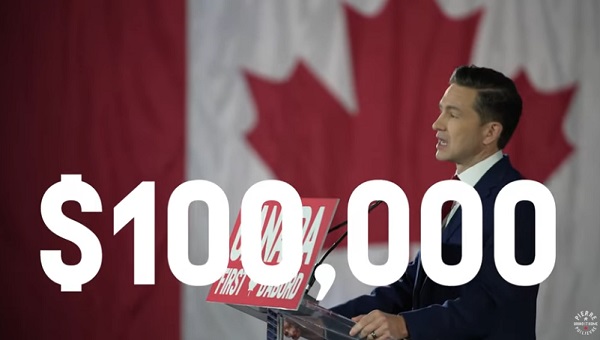
 2025 Federal Election1 day ago
2025 Federal Election1 day agoPoilievre Announces Plan To Cut Taxes By $100,000 Per Home
-
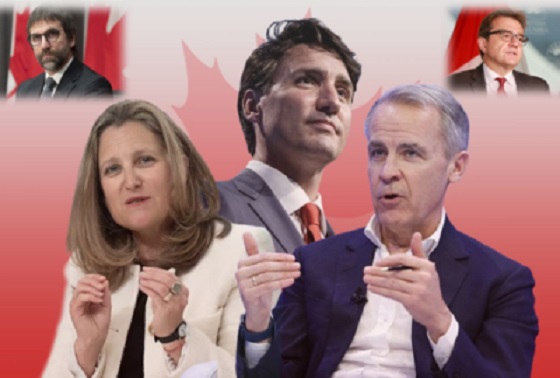
 2025 Federal Election2 days ago
2025 Federal Election2 days agoThe status quo in Canadian politics isn’t sustainable for national unity
-
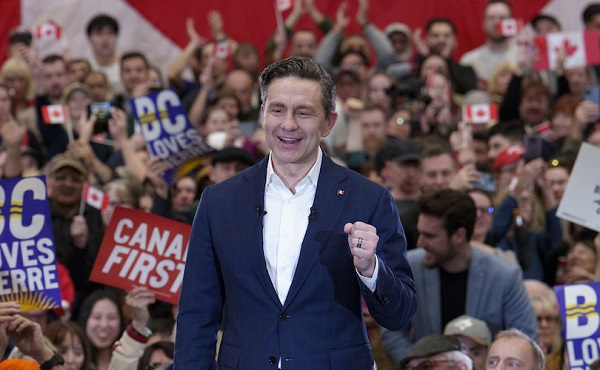
 2025 Federal Election1 day ago
2025 Federal Election1 day agoTwo Canadian police unions endorse Pierre Poilievre for PM
-

 Business2 days ago
Business2 days agoScott Bessent Says Trump’s Goal Was Always To Get Trading Partners To Table After Major Pause Announcement
-

 2025 Federal Election1 day ago
2025 Federal Election1 day agoCarney needs to cancel gun ban and buyback




